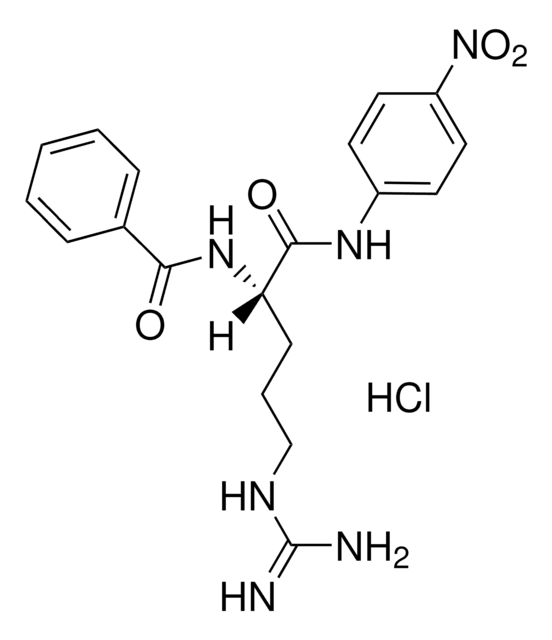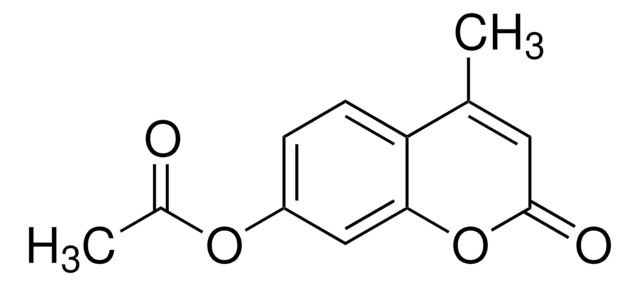N8010
4-Nitrophenyl 4-guanidinobenzoate hydrochloride
protease substrate, ≥95.0% (TLC), powder
Sinónimos:
4-Guanidinobenzoic acid 4-nitrophenylester hydrochloride, NPGB, pNPGB
About This Item
Productos recomendados
product name
4-Nitrophenyl 4-guanidinobenzoate hydrochloride, protease inhibitor and substrate
Quality Level
assay
≥95.0% (TLC)
form
powder
solubility
formic acid: soluble 49.00-51.00 mg/mL
storage temp.
−20°C
SMILES string
Cl[H].NC(=N)Nc1ccc(cc1)C(=O)Oc2ccc(cc2)[N+]([O-])=O
InChI
1S/C14H12N4O4.ClH/c15-14(16)17-10-3-1-9(2-4-10)13(19)22-12-7-5-11(6-8-12)18(20)21;/h1-8H,(H4,15,16,17);1H
InChI key
PKSBDZOBYIKNGY-UHFFFAOYSA-N
¿Está buscando productos similares? Visita Guía de comparación de productos
General description
Application
- as a substrate for trypsin for active site titration experiments
- for pre-treating of mosquito eggs in the interplasmid transposition assay
- as a component of isotonic buffer to moisten filter paper for mosquito embryo collection
Biochem/physiol Actions
signalword
Danger
hcodes
Hazard Classifications
Eye Dam. 1
Storage Class
11 - Combustible Solids
wgk_germany
WGK 3
flash_point_f
Not applicable
flash_point_c
Not applicable
ppe
dust mask type N95 (US), Eyeshields, Gloves
Certificados de análisis (COA)
Busque Certificados de análisis (COA) introduciendo el número de lote del producto. Los números de lote se encuentran en la etiqueta del producto después de las palabras «Lot» o «Batch»
¿Ya tiene este producto?
Encuentre la documentación para los productos que ha comprado recientemente en la Biblioteca de documentos.
Nuestro equipo de científicos tiene experiencia en todas las áreas de investigación: Ciencias de la vida, Ciencia de los materiales, Síntesis química, Cromatografía, Analítica y muchas otras.
Póngase en contacto con el Servicio técnico









